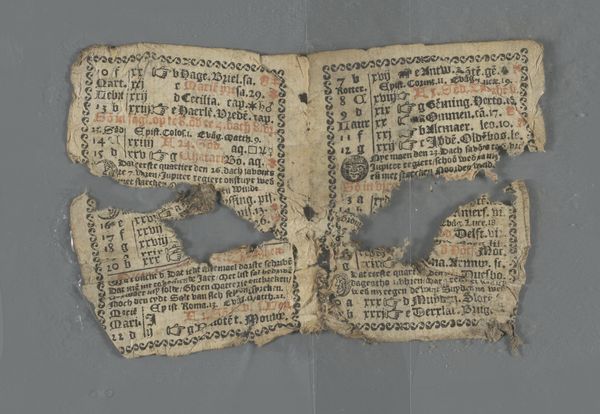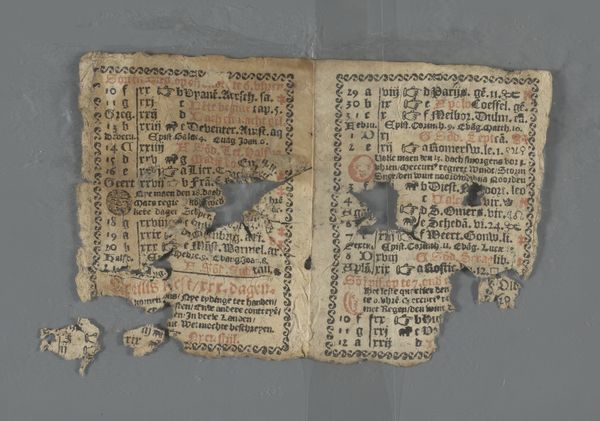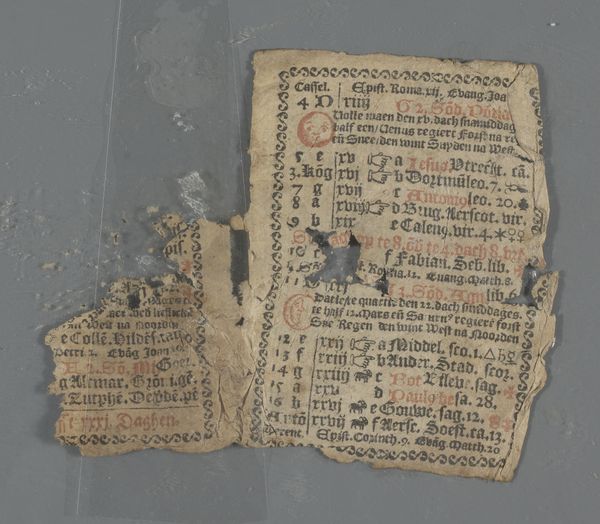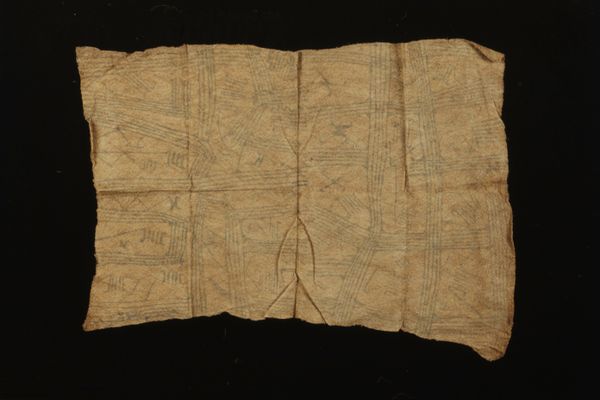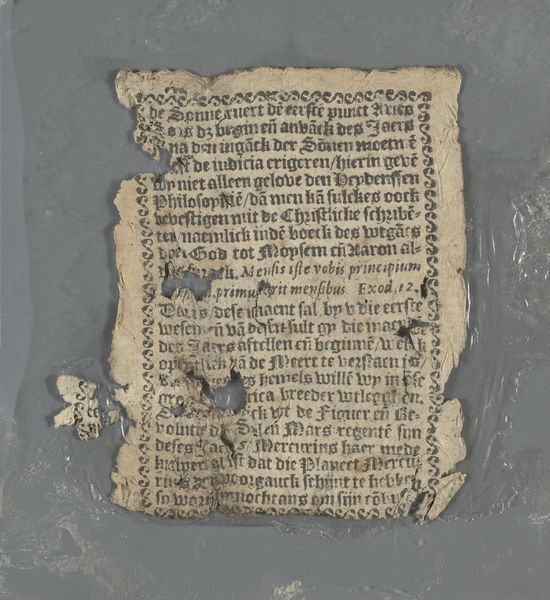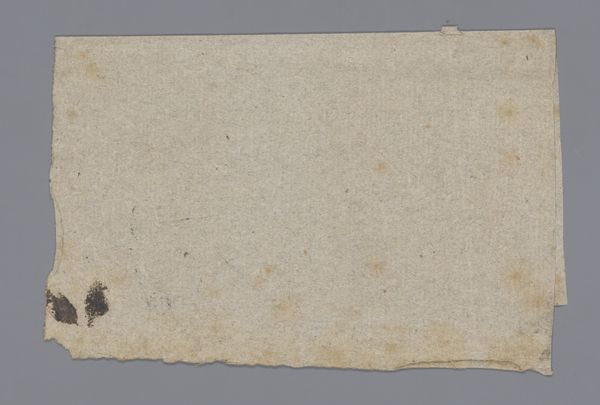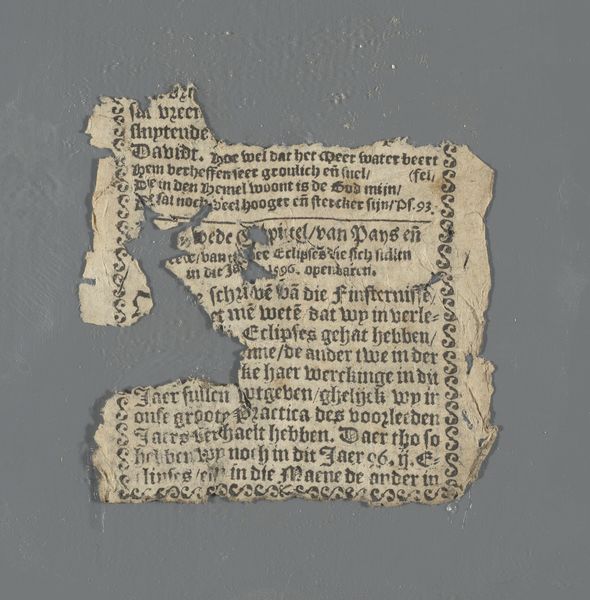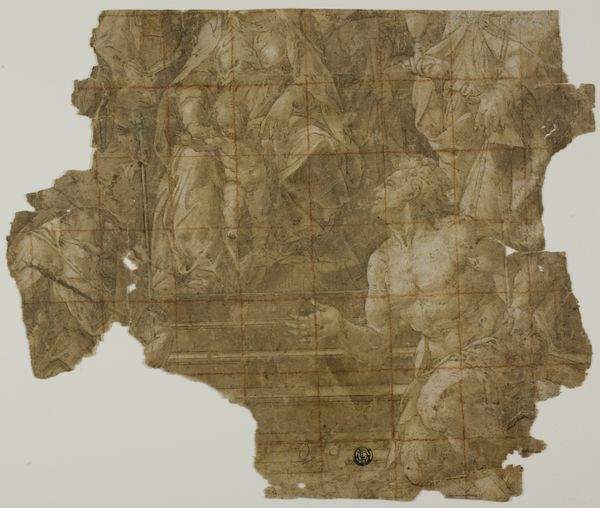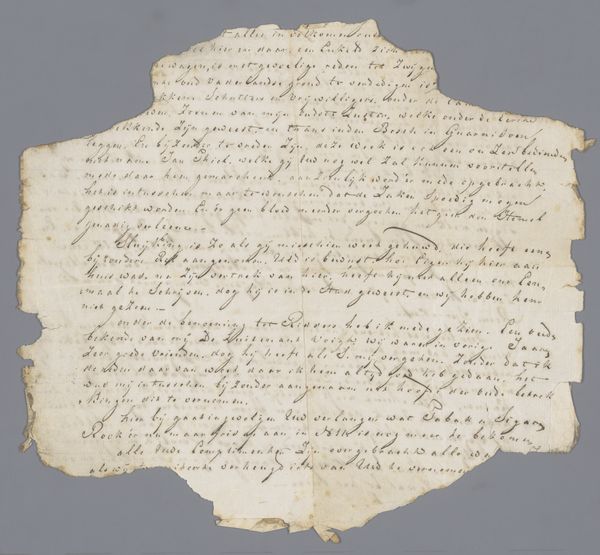
mixed-media, print, paper, typography, woodcut, engraving
#
mixed-media
#
medieval
# print
#
paper
#
typography
#
woodcut
#
northern-renaissance
#
engraving
#
mixed media
#
calligraphy
Dimensions: height 10 cm, width 13.5 cm
Copyright: Rijks Museum: Open Domain
Curator: This incredibly fragile piece is a page from a Deventer Almanac for the leap year 1596. It resides here at the Rijksmuseum. The printmaking combines woodcut, engraving, and typography, showcasing a range of techniques for mass production at the time. Editor: It’s like holding a fragment of time. Even in its damaged state, I’m struck by the density of information packed onto the page—text, symbols, astrological signs…a complete visual system. Curator: Indeed. Almanacs like this were vital tools. They offered calendars, tide tables, astrological predictions, and even medical advice—all things vital for merchants, farmers, and other tradespeople navigating 16th-century life. Editor: And the material itself – paper, ink – speaks to accessibility. Print democratized knowledge to an extent. How did these almanacs influence daily routines, the planning of labor? Did particular manufacturers have a reputation for accuracy, or conversely, a propaganda agenda? Curator: Many would have been quite localized. You know, it is likely printed right in Deventer. Also, consider the labour: from the making of the paper, to the cutting of wood blocks, and of course, distribution. And paper was still quite valuable at this time. We can explore this from a materials standpoint, from watermarks to wear, even now. Editor: Visually, the page's structure echoes medieval illuminated manuscripts while simultaneously foreshadowing modern graphic design. Look at the arrangement—tight grids, contrasting black and red lettering; there's a functional aesthetic beauty. Curator: And how were these disseminated? Did local distributors add their own marginalia? Who exactly comprised the audience? It’s hard to say now based on condition, but these almanacs were likely ubiquitous within some communities. Editor: Ultimately, this small, damaged artifact opens up vast avenues for understanding 16th-century social life, from economic rhythms to individual beliefs and the mechanics of early information economies. Curator: I agree entirely. Holding something so palpably connected to daily life over 400 years ago truly underscores the intricate connections between materials, labor, and the relentless passage of time.
Comments
No comments
Be the first to comment and join the conversation on the ultimate creative platform.
